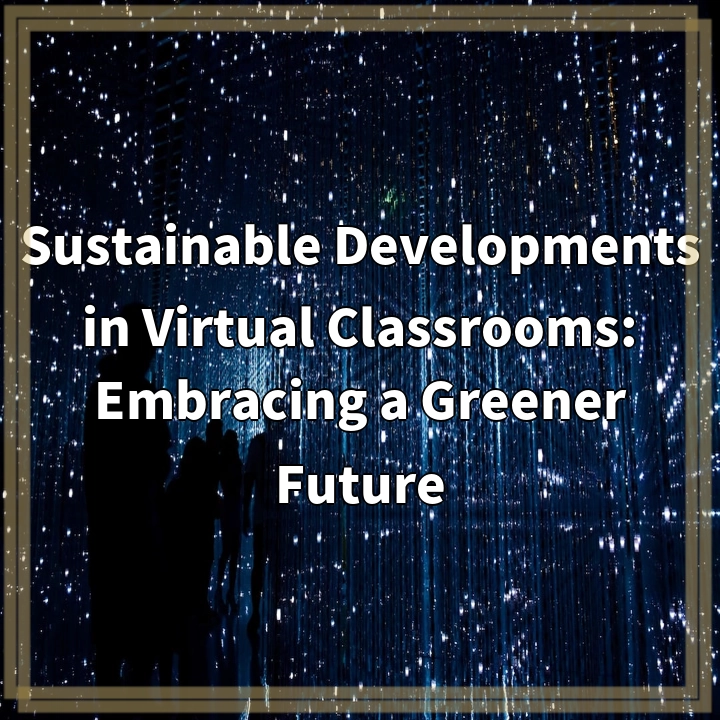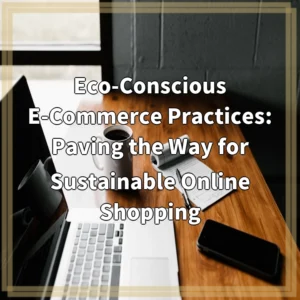
What is Sustainable Developments in Virtual Classrooms: Embracing a Greener Future?
Sustainable developments in virtual classrooms refer to the implementation of environmentally friendly practices and technologies in online educational settings. With the rise of digital learning platforms and remote learning, there has been an increasing focus on making virtual classrooms more sustainable and eco-friendly.
Real-World Problems Associated with Sustainable Developments in Virtual Classrooms
While virtual classrooms offer numerous benefits such as accessibility and flexibility, there are also several challenges and concerns regarding their sustainability. Here are some of the real-world problems associated with sustainable developments in virtual classrooms:
1. Energy Consumption:
The extensive use of technology in virtual classrooms, including computers, servers, and internet connectivity, leads to significant energy consumption. This energy consumption contributes to carbon emissions and impacts the environment.
2. E-Waste Generation:
The rapid advancement of technology often leads to shorter lifecycles of electronic devices, resulting in increased e-waste generation. The disposal of outdated devices poses environmental risks due to the improper handling of hazardous materials and the inefficient recycling of electronic components.
3. Internet Infrastructure:
Virtual classrooms heavily rely on stable and high-bandwidth internet connections. In areas with limited internet access or unreliable connections, students may face difficulties in accessing online education, resulting in unequal learning opportunities and widening the digital divide.
4. Digital Inclusion:
The shift towards virtual classrooms assumes that all students have access to the necessary technology and internet connectivity. However, not all students have equal access to computers, tablets, or reliable internet connections, leading to disparities in educational opportunities and hindering the goal of sustainability in virtual learning.
5. Privacy and Data Security:
With the increased reliance on digital platforms, there are concerns about privacy and data security in virtual classrooms. Data breaches and unauthorized access to personal information can have serious implications, making it crucial to implement robust security measures to protect students’ privacy and secure their information.

Solutions for Sustainable Developments in Virtual Classrooms
In order to address the real-world problems associated with sustainable developments in virtual classrooms, several solutions can be implemented:
1. Energy-efficient Technologies:
Implementing energy-efficient devices and infrastructure, such as low-power computers, energy-saving servers, and efficient cooling systems, can significantly reduce energy consumption in virtual classrooms. Additionally, utilizing renewable energy sources, such as solar or wind power, can further minimize the environmental impact.
2. E-Waste Management:
Proper e-waste management practices should be adopted to minimize the negative consequences of electronic waste. This includes promoting device recycling and refurbishment, encouraging responsible disposal of outdated equipment, and supporting initiatives that aim to extend the lifespan of electronic devices through repairs and upgrades.
3. Improving Internet Accessibility:
Efforts should be made to bridge the digital divide and improve internet accessibility in underserved areas. This can be achieved through government initiatives, collaboration with internet service providers, and the development of community networks, ensuring that all students have equal opportunities for online learning.
4. Promoting Digital Inclusion:
To promote digital inclusion, schools and organizations can provide access to devices and internet connectivity for disadvantaged students. Collaboration with non-profits, offering subsidies or grants, and fostering partnerships with technology companies can help ensure that all students have the necessary tools to participate in virtual classrooms.
5. Data Security and Privacy Measures:
To safeguard students’ privacy and protect their data, robust security measures should be implemented. This includes encryption protocols, strict user authentication, regular software updates, and educating students and teachers about data privacy best practices.















